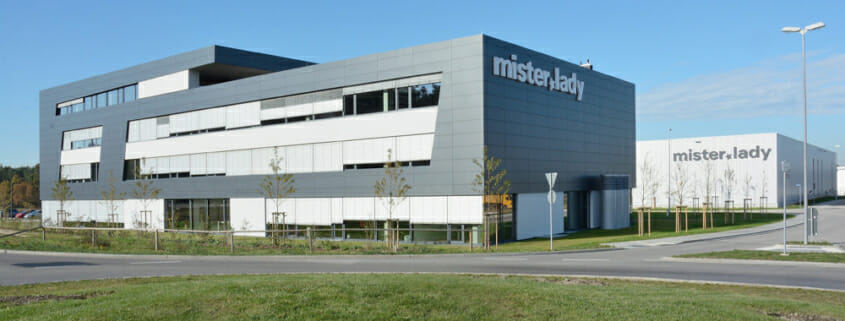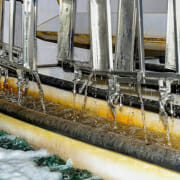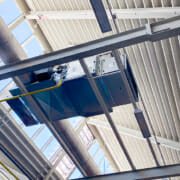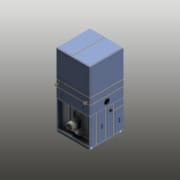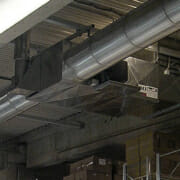Dust-free feel-good climate without drafts on 4,500 sqm
The German fashion retailer mister*lady relies on energy-efficient heating without dust and drafts. LK Metall installed an innovative heating and ventilation system as part of a new construction of a logistics center for the German fashion retailer mister*lady in Schwabach. An investment that has already proven itself in many ways, emphasizes mister*lady managing director, Rudolf Kempter.
Background: mister*lady GmbH moved its headquarters from Nuremberg to Schwabach. In addition to the new central administration with an area of 6,000 m², two logistics halls with an area of 4,500m² each were built. Each hall has 10 gates, a room height of about 7.50 m and a room volume of about 75,000 m³.
In particular, the climate-friendly heating and ventilation of the logistics halls posed a challenge. Managing Director Kempter was faced with a choice. “The architect, general contractor and other consultants recommended different solutions,” he recalls, “so with new construction, it’s important to find out exactly what the requirements are.” Of course, the warehouse activities had to be taken into account: The approximately 22 mister*lady employees moved about 15 million parts in about one million packages per year in single-shift operation. Around 3,600 arrivals and departures took place at the 10 loading stations.
Since the production halls employ the company’s own staff, Kempter is particularly concerned about their well-being: “A modern and energy-efficient solution was important. To achieve a good indoor climate for our people, the temperature distribution must be even and free of dust and drafts. Rudolf Kempter deliberately decided against using gas-fired dark radiators.
Technical structure of the hot air generators
The warm air generators installed under the ceiling draw in waste heat rising from the hall – such as heat generated by lighting or solar radiation – and filter it. In addition, fresh outside air can be drawn in. The air passes a stainless steel combustion chamber to bring it to the desired room temperature. Turbulent flow of the exhaust gases is generated inside the heat exchange tubes arranged on the left and right, thus ensuring optimized heat exchange. Special air outlets and return air ceiling fans distribute the air flow draught-free in the hall. The hot air distribution is controlled automatically by means of PI differential temperature control via measuring sensors in the working area and on the ceiling.
A control system regulates the temperature of the system intelligently and adapted to the wishes of mister*lady: The hall is heated individually as required. The desired room temperature is freely programmable. After an installation period of only one week, mister*lady was able to put the systems into operation.
Costs in view
Looking back, after a first winter heating season, the managing director’s expectations have been met: “The employees are satisfied. The air layering is super, as promised. The air is distributed evenly. There are no cold or warm corners, no trace of drafts.” The energy consumption is also convincing: “On normal working days, we need an average of 320 m³ of gas during the cold season, which corresponds to a cost of about €80,” says Rudolf Kempter.
Especially in the transitional period, the system does not require the burner to be switched on. Then the accumulated heat under the hall roof is already enough. The return air ceiling fans then distribute it evenly back to where it is needed. Great climate should also prevail in the summer at mister*lady. Here, the good hall insulation and the ventilation system play the supporting role. At night, the system draws in the cold outside air and has already ensured pleasantly cool temperatures in the logistics hall by the time the shift begins in the morning. This makes extra air conditioning superfluous.
Advantage: less space required for hall expansion
Another advantage of the plant will only come into play in the future. Rudolf Kempter has further plans for the expansion of the hall. He would like to add a lattice mezzanine at mid-hall height for administration. No problem thanks to the intelligent air distribution of the RBW 125. “With our heating solution, even the employees on the first floor still get warm feet. In addition, there is no need to maintain a minimum distance, as is required for radiant heaters. The space consumption would have been enormous with probably up to 70 radiant heaters needed in the logistics area,” he concludes.

